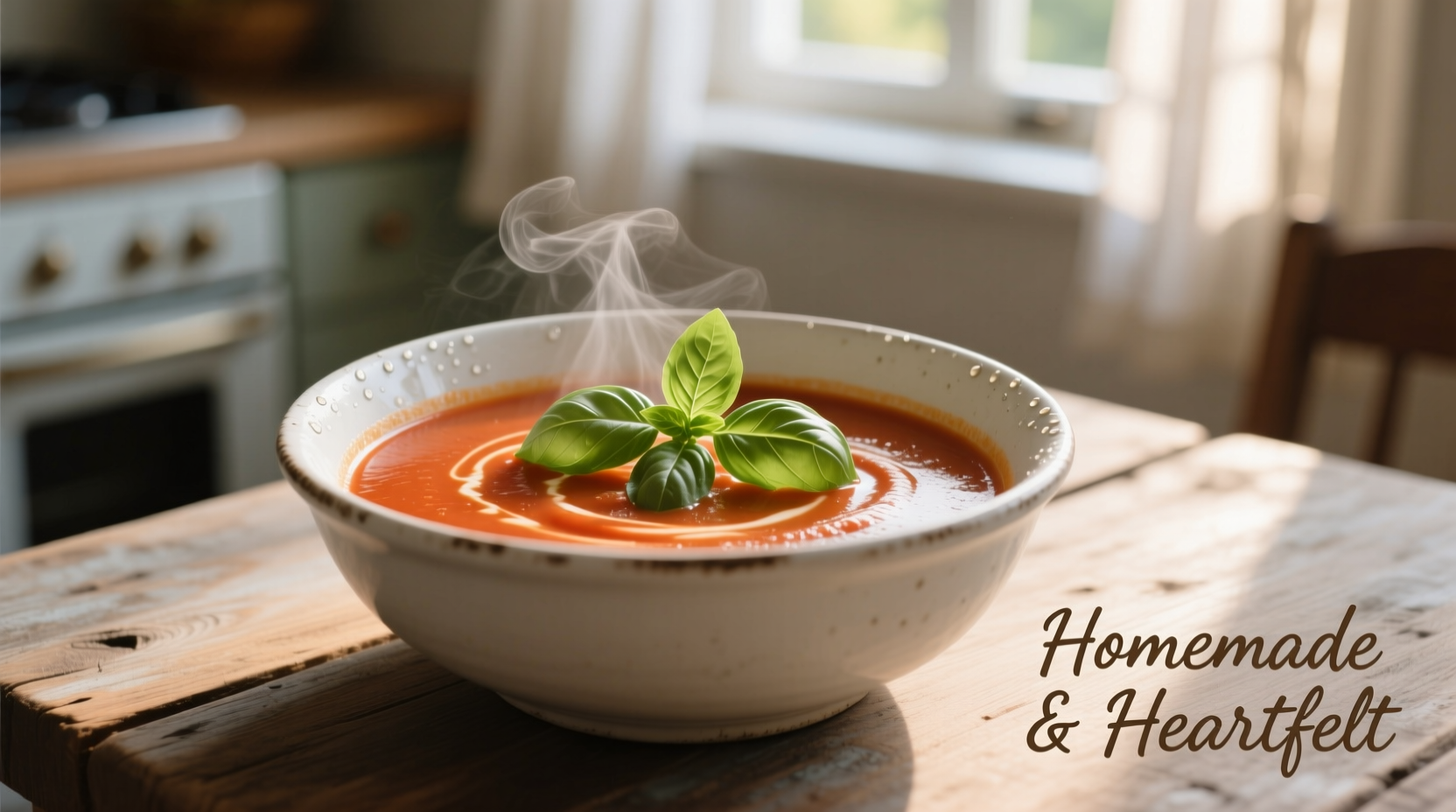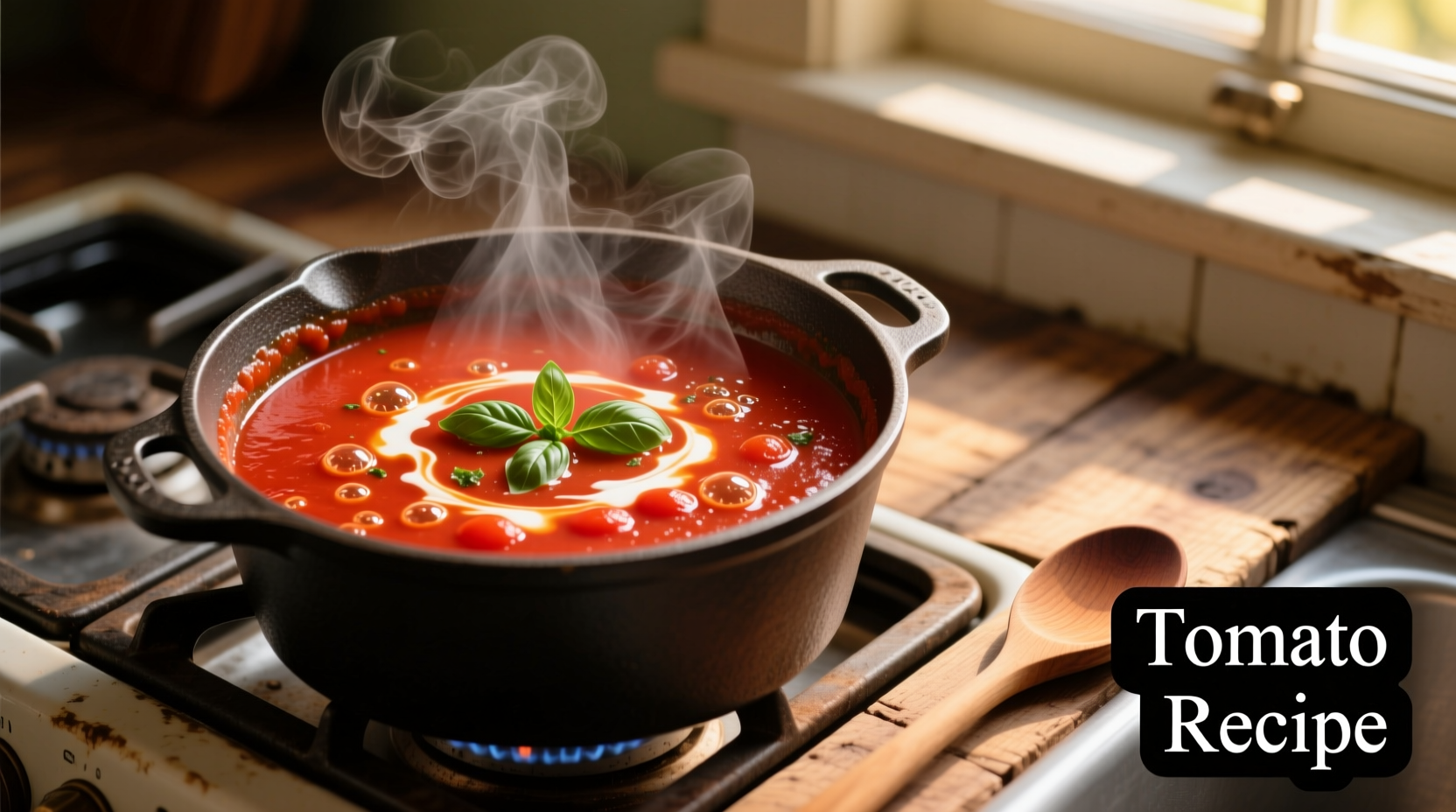When you're staring at an empty pantry but have a can of tomato sauce on hand, transforming it into comforting tomato soup isn't just possible—it's surprisingly simple. Many home cooks mistakenly believe you need fresh tomatoes or specialty ingredients, but tomato sauce provides a perfectly viable foundation when you understand how to enhance its flavor profile and adjust its consistency.
The Science Behind Tomato Sauce as Soup Foundation
Tomato sauce typically contains 20-24% tomato solids, making it more concentrated than tomato puree (10-12%) but less intense than tomato paste (24-30%). This middle ground gives you flexibility—you're not starting from scratch, but you have room to build complexity. The key is understanding what's missing from basic tomato sauce and how to compensate.
| Tomato Product | Tomato Solids | Best For Soup Making |
|---|---|---|
| Tomato Sauce | 20-24% | Quick base requiring minimal reduction |
| Tomato Puree | 10-12% | Requires significant reduction time |
| Tomato Paste | 24-30% | Flavor booster for other bases |
This composition data from the USDA FoodData Central confirms why tomato sauce works well—it already has the right balance of liquid and solids, requiring less cooking time to reach ideal soup consistency compared to puree.
Essential Ingredients Checklist
Transforming basic tomato sauce into exceptional soup requires just five foundational elements:
- Base: 1 (28-ounce) can tomato sauce (low sodium preferred)
- Liquid: 1½ cups broth (vegetable or chicken)
- Aromatics: 1 small onion, 2 garlic cloves (finely diced)
- Fat: 2 tablespoons olive oil or butter
- Flavor Enhancers: 1 teaspoon sugar, ½ teaspoon dried basil, salt and pepper to taste
Professional chefs at the Culinary Institute of America emphasize that the quality of your tomato sauce matters significantly—choose brands with minimal ingredients (tomatoes, salt, citric acid) without added herbs or sugars for maximum customization.
Step-by-Step Transformation Process
1. Build Flavor Foundation (5-7 minutes)
Heat olive oil in a medium pot over medium heat. Add diced onions and cook until translucent (about 3 minutes), then add minced garlic and cook for 30 seconds until fragrant. This critical step develops flavor compounds that compensate for the cooked nature of canned sauce.
2. Incorporate and Enhance (2-3 minutes)
Add tomato sauce to the pot along with sugar and dried herbs. Stir constantly while bringing to a gentle simmer—this "cooks out" any metallic can taste and allows flavors to meld. The sugar balances acidity without making the soup sweet.
3. Achieve Perfect Consistency (8-10 minutes)
Gradually add broth while stirring. Bring to a simmer and cook for 8-10 minutes to allow flavors to integrate. For creamier texture, blend half the soup with an immersion blender—this creates body without dairy.

Troubleshooting Common Issues
If Your Soup Is Too Thin
Simmer uncovered for additional 5-7 minutes to reduce liquid. Alternatively, create a slurry with 1 tablespoon cornstarch mixed with 2 tablespoons cold water, then whisk into simmering soup.
If Your Soup Is Too Thick
Add broth or water ¼ cup at a time until desired consistency. Remember that soup thickens slightly as it cools.
If Flavor Lacks Depth
Add umami boosters: 1 teaspoon soy sauce, 2 anchovy fillets (melted in), or 1 tablespoon nutritional yeast. These enhance savoriness without being detectable in the final product.
Three Professional-Grade Variations
Creamy Roasted Garlic Version
Add 1 whole roasted garlic bulb (squeezed from cloves) during blending. The roasted garlic adds sweet complexity that balances tomato acidity beautifully.
Spicy Arrabbiata Style
Include ½ teaspoon red pepper flakes with aromatics and finish with fresh parsley. This Italian-inspired variation delivers bold heat that complements rather than overwhelms.
Summer Garden Fresh
Stir in ½ cup diced fresh tomatoes during the last 5 minutes of cooking. The fresh tomatoes add bright acidity that cuts through the cooked tomato base.
Storage and Flavor Development
Tomato soup actually improves overnight as flavors meld. Store in airtight container for up to 4 days in the refrigerator or freeze for up to 3 months. When reheating, add a splash of broth or water as soup thickens when chilled.
Food safety experts at the FDA recommend cooling soup rapidly before refrigeration—divide into shallow containers no more than 2 inches deep to ensure quick, even cooling that prevents bacterial growth.
Why This Method Works Better Than Starting From Scratch
Using tomato sauce as your base provides consistent flavor and texture year-round, unlike fresh tomatoes which vary in quality and acidity. The industrial processing of tomato sauce actually develops flavor compounds through controlled heating that's difficult to replicate at home. This method saves 45-60 minutes compared to cooking down fresh tomatoes while delivering equally complex results.











 浙公网安备
33010002000092号
浙公网安备
33010002000092号 浙B2-20120091-4
浙B2-20120091-4